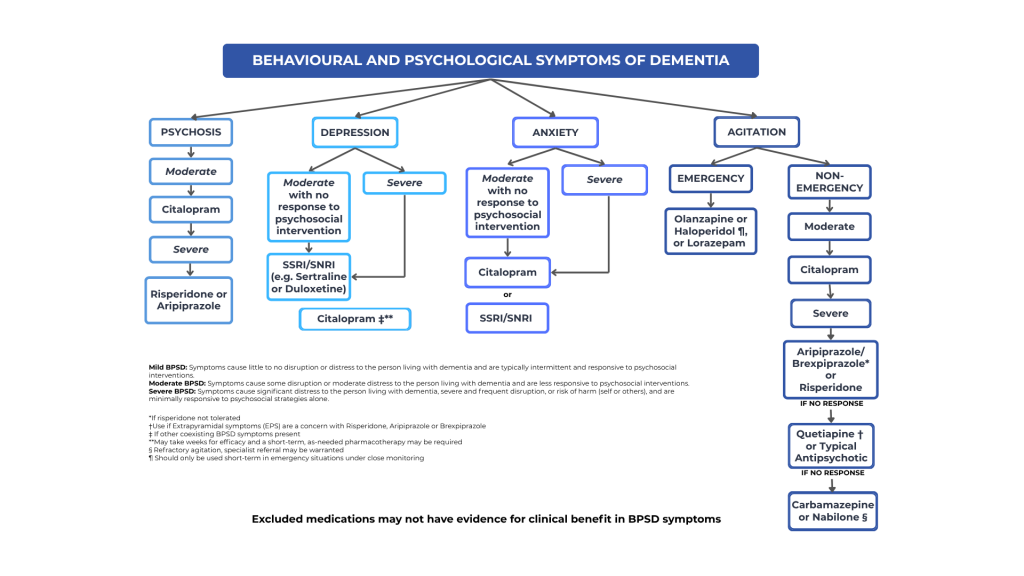This tool is designed to help clinicians understand, assess, and manage people living with dementia (PLWD) in primary care and LTC homes living with behavioural and psychological symptoms of dementia (BPSD) (responsive behaviours). This tool integrates best-practice evidence with clinical experience, and makes reference to relevant existing tools and services wherever possible.
Use PIECES™ to identify risks and BPSD causes
Use the PIECES 3-Question Template ™ to ask:
- What are the priority concerns; is it a change for the person?
- What are the RISKS and possible contributing factors? Think PIECES Avoid assumptions! Think atypical!
- What are the actions?
- Investigations
- Interactions
- Interventions
PIECES™ RISKS acronym to assess risks to the patient/resident and others:
- Roaming (e.g., searching, seeking exit)
- Imminent harm: frailty, falls, fire, firearms
- Suicide Ideation
- Kinship relationships (risk of harm by the person or to the person by others; includes avoidance of the person)
- Substance use, self-neglect, safe driving, security (e.g., finances, housing, food)
PIECES Assessment:
Physical
- Delirium
- Disease
- Discomfort
- Drugs
- Disability
Intellectual
- Neurocognitive changes (e.g., amnesia, aphasia, agnosia, apraxia, etc.)
Emotional
- Mood
- Adjustment
- Suicidality
- Substance use
- Psychosis
- Trauma
Capabilities
- Abilities overwhelmed/strengths underused
Environment
- Enabling/disabling factors, transitions
Social
- Life story, social network, cultural, spiritual, sexuality, gender identity
Visit PIECES Canada for more information.




